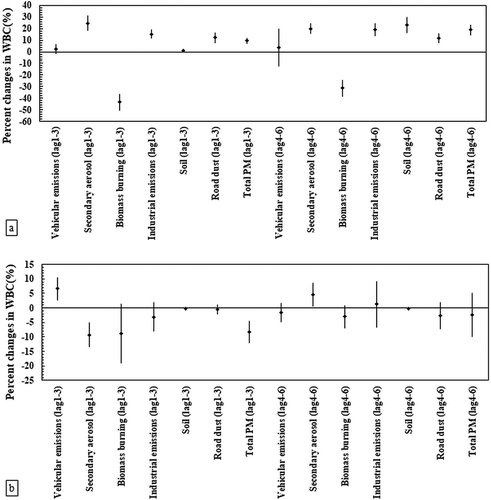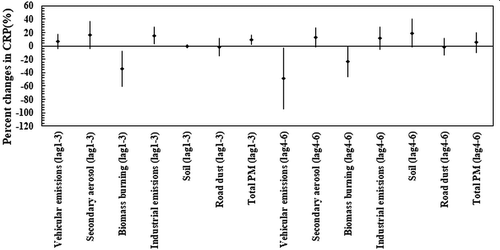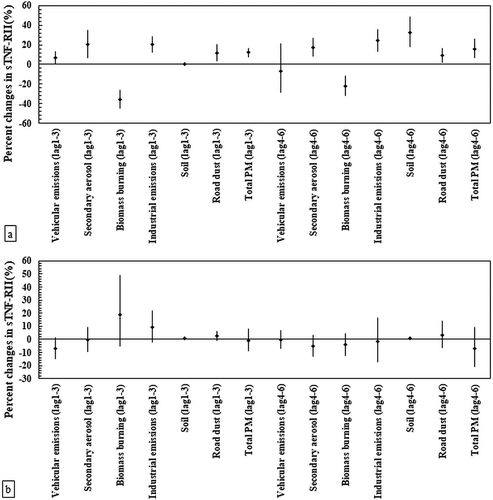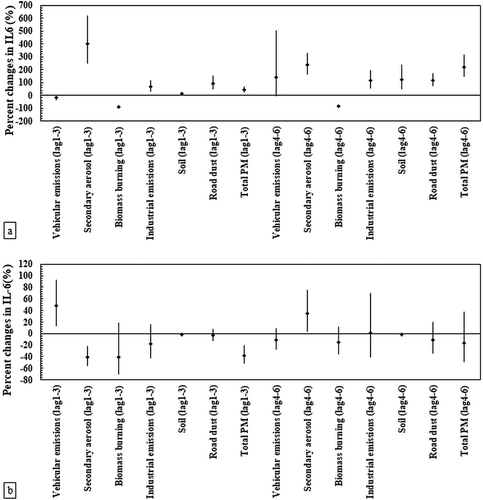Figures & data
Table 1. Spearman rank order correlation analyses between PM2.5 sources in (a) the Tohid retirement home and (b) the school dormitory
Figure 1. Associations between white blood cells (WBC) and source-specific PM2.5 concentrations in the panel of (a) the elderly (n = 44) and (b) healthy young adults (n = 40). Estimated percent changes in the blood marker (adjusted coefficient and 95% CI) corresponds to an IQR increase in total PM2.5 and source-specific PM2.5 concentrations (see IQR in Table S2 in the Supplementary material), adjusted for temperature and relative humidity

Figure 2. Associations between von Willebrand factor (vWF) and source-specific PM2.5 concentrations in the panel of (a) the elderly (n = 44) and (b) healthy young adults (n = 40). Estimated percent changes in the blood marker (adjusted coefficient and 95% CI) corresponds to an IQR increase in total PM2.5 and source-specific PM2.5 concentrations (see IQR in Table S2 in Supplementary material), adjusted for temperature and relative humidity

Figure 3. Associations between high sensitive C-reactive protein (hsCRP) and source-specific PM2.5 concentrations in the panel of the elderly (n = 44). Estimated percent changes in the blood marker (adjusted coefficient and 95% CI) corresponds to an IQR increase in total PM2.5 and source-specific PM2.5 concentrations (see IQR in Table S2 in Supplementary material), adjusted for temperature and relative humidity

Figure 4. Associations between tumor necrosis factor-soluble receptor-II (sTNF-RII) and source-specific PM2.5 concentrations in the panel of (a) the elderly (n = 44) and (b) healthy young adults (n = 40). Estimated percent changes in the blood marker (adjusted coefficient and 95% CI) corresponds to an IQR increase in total PM2.5 and source-specific PM2.5concentrations (see IQR in Table S2 in Supplementary material), adjusted for temperature and relative humidity

Figure 5. Associations between interleukin-6 (IL-6) and source-specific PM2.5 concentrations in the panel of (a) the elderly (n = 44) and (b) healthy young adults (n = 40). Estimated percent changes in the blood marker (adjusted coefficient and 95% CI) corresponds to an IQR increase in total PM2.5 and source-specific PM2.5 concentrations (see IQR in Table S2 in Supplementary material), adjusted for temperature and relative humidity

